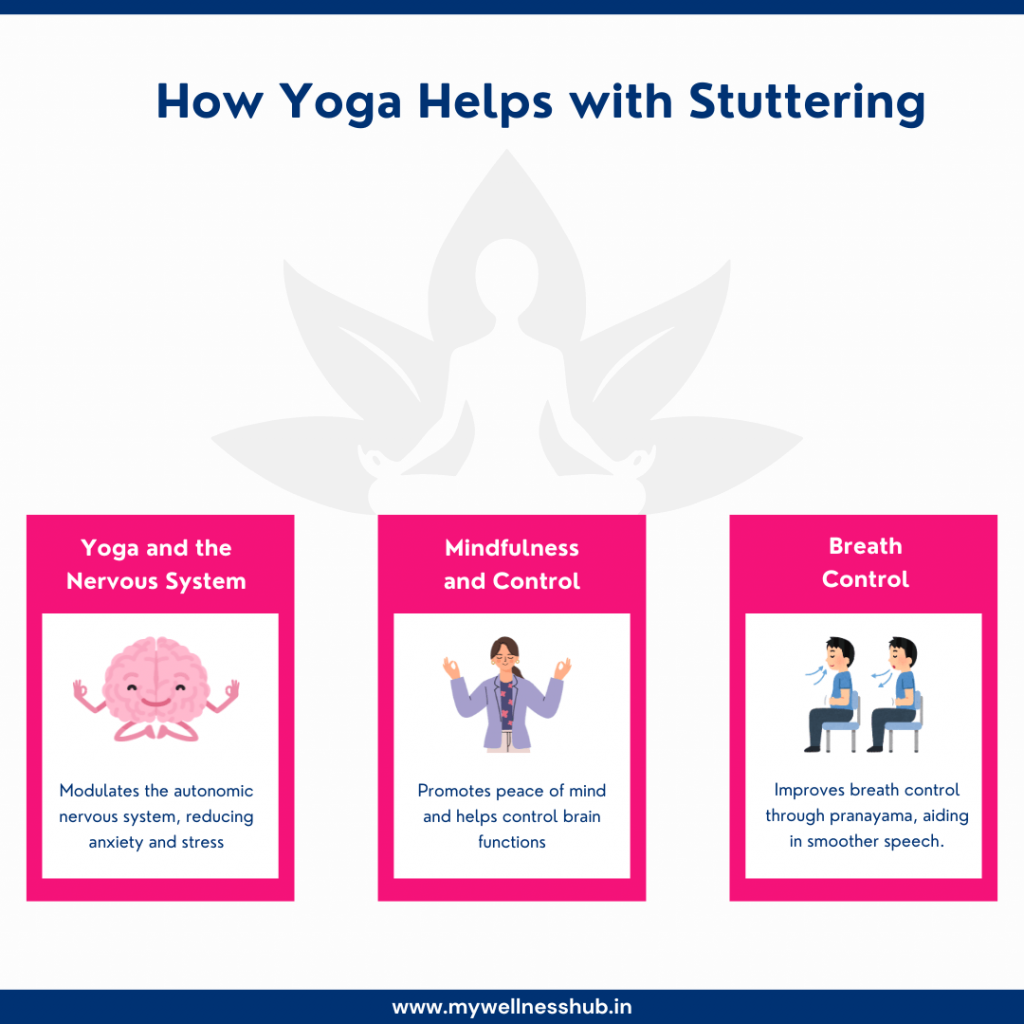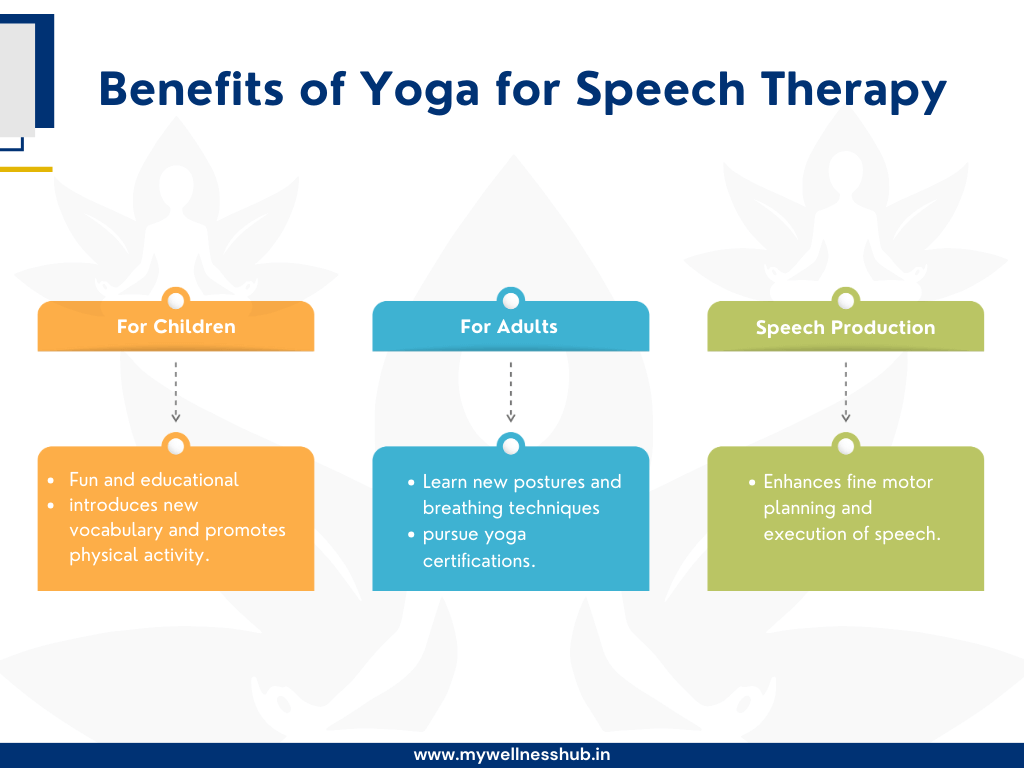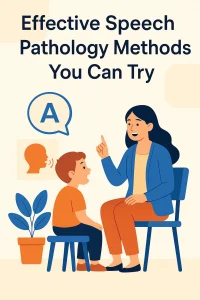Improve Speech Fluency with Yoga for Stuttering
Last Updated: August 9, 2024
Are you or someone close dealing with stuttering, a widespread speech disorder that disrupts fluid communication for millions worldwide? Characterized by involuntary speech repetitions, prolongations, and interruptions, stuttering often triggers both frustration and anxiety. However, there’s a promising, holistic approach that might help—yoga for stuttering. Yoga, globally acclaimed for its extensive physical and mental health benefits, extends beyond just physical poses. It encompasses vital breathing techniques and mindfulness practices. These aspects of yoga can significantly aid those with stuttering by alleviating anxiety, boosting concentration, and fostering relaxation, offering a comprehensive method to enhance speech fluency.
Understanding Stuttering
Stuttering is a speech disorder that disrupts the normal flow of speech. It is characterized by involuntary repetitions (such as repeating a sound or word), prolongations (stretching a sound out longer than normal), and blocks (where the person is unable to produce any sound despite trying to speak). These disruptions can make communication difficult and often lead to frustration and embarrassment for those who stutter.
But stuttering is more than just a physical speech issue; it has significant emotional and psychological impacts as well. Many people who stutter experience anxiety, especially in social situations. The anticipation of stuttering can create a vicious cycle: the more anxious a person feels about speaking, the more likely they are to stutter, which then increases their anxiety even further. This can lead to avoidance behaviors, where individuals might shy away from speaking situations altogether, impacting their personal, academic, and professional lives.
Also read: Understanding Stuttering: Causes, Impact, & Treatment
How Yoga Helps with Stuttering
Now that we understand the challenges of stuttering, let’s explore how yoga can offer relief and improvement. By focusing on the nervous system, mindfulness, and breath control, yoga provides a holistic approach to managing stuttering.

1. Yoga and the Nervous System
Yoga is known to have a significant impact on the autonomic nervous system, which controls involuntary bodily functions like heart rate and digestion. According to Heather Kauffman’s research in 2016, yoga modulates this system, helping to reduce anxiety and stress. This is particularly beneficial for people who stutter, as anxiety often exacerbates speech difficulties. By calming the autonomic nervous system, yoga helps to create a more relaxed state, making it easier to control speech.
2. Mindfulness and Control
Mindfulness meditation, a core component of yoga, aids in controlling brain functions and promoting peace of mind. For individuals who stutter, mindfulness can help manage the fear and anxiety associated with speaking. By practicing mindfulness, one learns to stay present and focused, reducing the negative emotions that can trigger stuttering episodes. This mental clarity and emotional control can lead to more fluent speech and greater confidence in communication.
3. Breath Control
Breath control, or pranayama, is another vital aspect of yoga that can greatly benefit those who stutter. Proper breathing techniques are crucial for managing speech fluency. Pranayama exercises, such as Anuloma-Viloma (alternate nostril breathing), Bhramari (humming bee breath), and Kapalbhati (skull-shining breath), help individuals gain control over their breathing. These techniques promote coordinated movement of the facial and vocal muscles, essential for smooth speech production. By incorporating these breathing exercises into daily practice, individuals can improve their breath control, leading to reduced stuttering and enhanced speech clarity.
Also read: Yoga for Better Speech: 12 Exercises to Help with Stuttering
Benefits of Yoga for Speech Therapy

Yoga can be a powerful tool in speech therapy, offering various benefits for both children and adults. By making the therapy process engaging and holistic, yoga helps individuals improve their speech fluency in a fun and effective way.
1. For Children
Yoga can transform speech therapy into an enjoyable and educational experience for children. Each yoga posture, or asana, is often named after animals or elements of nature, such as the Downward Dog or the Tree Pose. This not only makes the practice fun but also introduces children to new vocabulary. Imagine your child pretending to be a tree, balancing on one leg, while learning the word “tree” in both English and Sanskrit. It’s a playful way to enhance their language skills.
Moreover, yoga promotes physical activity, which is crucial for overall development. The various postures help improve flexibility, strength, and coordination, all of which are beneficial for speech production. Children are more likely to engage in therapy sessions when they are fun and interactive, making yoga an excellent addition to traditional speech therapy methods.
2. For Adults
Adults can also greatly benefit from incorporating yoga into their speech therapy routine. Yoga offers an opportunity to learn new postures and breathing techniques, which can be particularly helpful for managing stuttering. These practices help adults gain better control over their breath and speech muscles, leading to improved fluency.
Additionally, adults can pursue yoga certifications, which not only deepen their practice but also open up new career opportunities. Imagine expanding your skill set and potentially teaching others the benefits of yoga for speech therapy. It’s a fulfilling way to enhance personal growth while contributing to the community.
3. Speech Production
Yoga, pranayama, and meditation play a crucial role in improving speech production. These practices involve fine motor planning and the execution of coordinated movements, essential for fluent speech. For instance, pranayama exercises, such as Anuloma-Viloma and Bhramari, focus on breath control, which directly impacts how smoothly one can speak.
During yoga sessions, both children and adults engage in predictable routines that create a familiar and safe environment. This repetition helps build confidence and reinforces motor sequences necessary for speech. Meditation and chanting also contribute to this process by promoting relaxation and reducing anxiety, which often hinders fluent speech.
Know more: Understanding Speech Chain: Key to Better Communication
Benefits of Yoga for Speech Therapy
| Benefit | Children | Adults | Speech Production |
|---|---|---|---|
| Fun and Educational | – Introduces new vocabulary through fun postures | – Learn new postures and breathing techniques | – Enhances fine motor planning |
| – Makes therapy sessions engaging and interactive | – Provides a sense of achievement and progression | – Helps in the execution of coordinated speech movements | |
| Physical Activity | – Promotes physical development | – Offers yoga certification opportunities | – Improves breath control |
| – Enhances flexibility, strength, and coordination | – Encourages regular physical exercise | – Strengthens respiratory muscles | |
| Mental Well-being | – Reduces anxiety and stress | – Boosts confidence and relaxation | – Promotes relaxation and focus |
| – Encourages mindfulness and emotional regulation | – Helps manage stress and negative emotions | – Reduces the anxiety associated with speaking | |
| – Supports emotional and mental growth | – Supports overall mental health | – Creates a calm mind conducive to fluent speech |
Specific Yoga Practices for Stuttering
To effectively incorporate yoga into speech therapy, it’s essential to understand specific practices that can benefit individuals who stutter. Here, we detail various yoga postures, breathing exercises, and meditation techniques that can help improve speech fluency.
1. Asanas (Postures)
Certain yoga postures, or asanas, are particularly beneficial for managing stuttering. These postures help in reducing physical tension and promoting relaxation, which can make speech more fluent.
- Downward Dog (Adho Mukha Svanasana): This posture stretches the entire body, relieving tension in the shoulders, neck, and back. By promoting relaxation, it helps reduce the physical stress that can exacerbate stuttering.
- Tree Pose (Vrksasana): This balancing pose helps improve concentration and focus. It encourages mental calmness and steadiness, which are essential for managing stuttering. The pose also strengthens the legs and core, promoting overall body awareness.
Practicing these postures regularly can create a more relaxed and focused state, beneficial for smoother speech production.
2. Pranayama (Breathing Exercises)
Breath control, or pranayama, is a cornerstone of yoga practice. For individuals who stutter, mastering pranayama techniques can significantly improve breath control and speech clarity.
- Anuloma-Viloma (Alternate Nostril Breathing): This technique balances the breath and calms the mind. By alternating nostrils while breathing, it promotes even and controlled breathing patterns, which are crucial for fluent speech.
- Bhramari (Humming Bee Breath): This exercise involves making a humming sound while exhaling, which soothes the nervous system and reduces anxiety. The vibrations from the humming also help relax the vocal cords and facial muscles.
- Kapalbhati (Skull-Shining Breath): This powerful breathing technique involves forceful exhalations and passive inhalations. It cleanses the respiratory system, increases lung capacity, and enhances breath control, all of which are beneficial for speech clarity.
Incorporating these pranayama exercises into daily practice can help individuals gain better control over their breathing, leading to improved speech fluency.
Meditation and Chants
Meditation and chanting play a significant role in reducing anxiety and promoting relaxation, both of which are critical for managing stuttering.
- Meditation: Regular meditation practice helps calm the mind and reduce stress. Techniques such as mindfulness meditation encourage individuals to stay present and focused, reducing the anxiety that often triggers stuttering episodes.
- Chanting: Chanting involves repetitive vocal sounds that can improve breath control and vocal muscle coordination. Common chants, such as “Om,” create vibrations that soothe the nervous system and promote relaxation.
By incorporating meditation and chanting into their routine, individuals can develop a more relaxed and focused mindset, which is conducive to fluent speech.
Specific Yoga Techniques for Stuttering
| Yoga Technique | Description | Benefits |
|---|---|---|
| Downward Dog | – A foundational pose that involves stretching the entire body by forming an inverted V-shape with the body. – Helps to improve overall flexibility and strength | – Reduces tension in the shoulders, neck, and back – Promotes relaxation |
| Tree Pose | – A balancing pose where one leg is placed on the inner thigh of the opposite leg, resembling a tree. – Strengthens the legs and core | – Improves balance and concentration – Promotes mental calmness |
| Anuloma-Viloma | – A breathing exercise involving alternate nostril breathing to balance the breath and calm the mind. – Enhances lung function | – Balances breath – Calms the mind |
| Bhramari | – A breathing technique where a humming sound is produced while exhaling, mimicking the sound of a bee. – Helps to relax the vocal cords and facial muscles | – Soothes the nervous system – Reduces stress and anxiety |
| Kapalbhati | – A vigorous breathing exercise involving forceful exhalations and passive inhalations, known as skull-shining breath. – Cleanses the respiratory system | – Increases lung capacity – Boosts overall energy and vitality |
| Meditation | – A practice of focused relaxation that helps calm the mind and reduce stress. – Promotes mental clarity | – Reduces anxiety – Enhances emotional regulation |
| Chanting | – Involves repetitive vocal sounds or mantras that promote breath control and mental focus. | – Improves breath control – Promotes relaxation and mental focus |
Conclusion
Yoga offers many benefits that can help people who stutter improve their speech fluency. By practicing specific yoga techniques like postures, breathing exercises, and meditation, individuals can reduce anxiety, gain better breath control, and promote relaxation. These elements are essential for smoother speech. Remember, yoga should be used alongside traditional speech therapy, not as a replacement. Combining these approaches addresses both the physical and emotional aspects of stuttering, leading to the best results.
If you or someone you know struggles with stuttering, try incorporating yoga into your speech therapy routine. This holistic approach can boost confidence and improve communication skills. At Wellness Hub, we provide resources and support to help you on this journey.
Frequently Asked Questions:
1. Can yoga help with stuttering?
Yes, yoga can help manage stuttering by reducing anxiety, improving breath control, and promoting relaxation. Specific yoga practices like asanas (postures), pranayama (breathing exercises), and meditation can complement traditional speech therapy.
2. What are the best yoga poses for stuttering?
Some beneficial yoga poses for stuttering include the Downward Dog (Adho Mukha Svanasana) and Tree Pose (Vrksasana). These poses help reduce tension and promote relaxation, which can aid in smoother speech.
3. How does pranayama help with speech fluency?
Pranayama, or breathing exercises, helps improve breath control, which is essential for fluent speech. Techniques like Anuloma-Viloma (alternate nostril breathing), Bhramari (humming bee breath), and Kapalbhati (skull-shining breath) are particularly effective.
4. Should yoga replace traditional speech therapy for stuttering?
No, yoga should not replace traditional speech therapy. It should be used as a complementary approach. Combining yoga with traditional speech therapy addresses both the physical and emotional aspects of stuttering for better outcomes.
5. How can meditation help people who stutter?
Meditation helps reduce anxiety and promotes relaxation, creating a calm mind and body. This mental state can significantly reduce the frequency and severity of stuttering episodes.
6. Can children benefit from yoga for stuttering?
Yes, children can benefit from yoga as it makes speech therapy fun and engaging. Yoga introduces new vocabulary, promotes physical activity, and helps reduce anxiety, all of which are beneficial for managing stuttering.
7. How often should someone practice yoga to see improvements in stuttering?
Practicing yoga regularly, ideally daily, can lead to significant improvements. Consistency is key to gaining better breath control, reducing anxiety, and promoting relaxation, all of which help manage stuttering.
8. What should I look for in a speech therapist who integrates yoga?
Look for a speech therapist experienced in integrating yoga techniques into their therapy sessions. They should understand the unique challenges of stuttering and provide guidance on incorporating yoga into your treatment plan.
9. Are there any specific yoga courses or certifications for stuttering?
While there are no specific certifications for yoga for stuttering, many general yoga courses can teach beneficial techniques. Practicing under the guidance of a certified yoga instructor and speech therapist is recommended.
10. Where can I find resources and support for integrating yoga into speech therapy?
Wellness Hub offers resources and support for integrating yoga into speech therapy. Visit our Online Speech Therapy page for personalized treatment plans that include yoga practices.
About the Author:
Anuradha Karanam
Speech-language pathologist (7+ years of experience)
Anuradha Karanam is a skilled speech-language pathologist with over 6 years of experience. Fluent in Tamil, Telugu, Hindi, and English, she specializes in parent counseling, speech sound disorders, fluency assessment, and speech-language evaluations. Anuradha excels at working with children with developmental disorders, offering creative and effective therapy programs. Currently at Wellness Hub, she holds a BASLP degree and is registered with the RCI (CRR No A85500). Her patience, ambition, and dedication make her a trusted expert in her field.
Book your Free Consultation Today
Parent/Caregiver Info:
Client’s Details:
* Error Message









